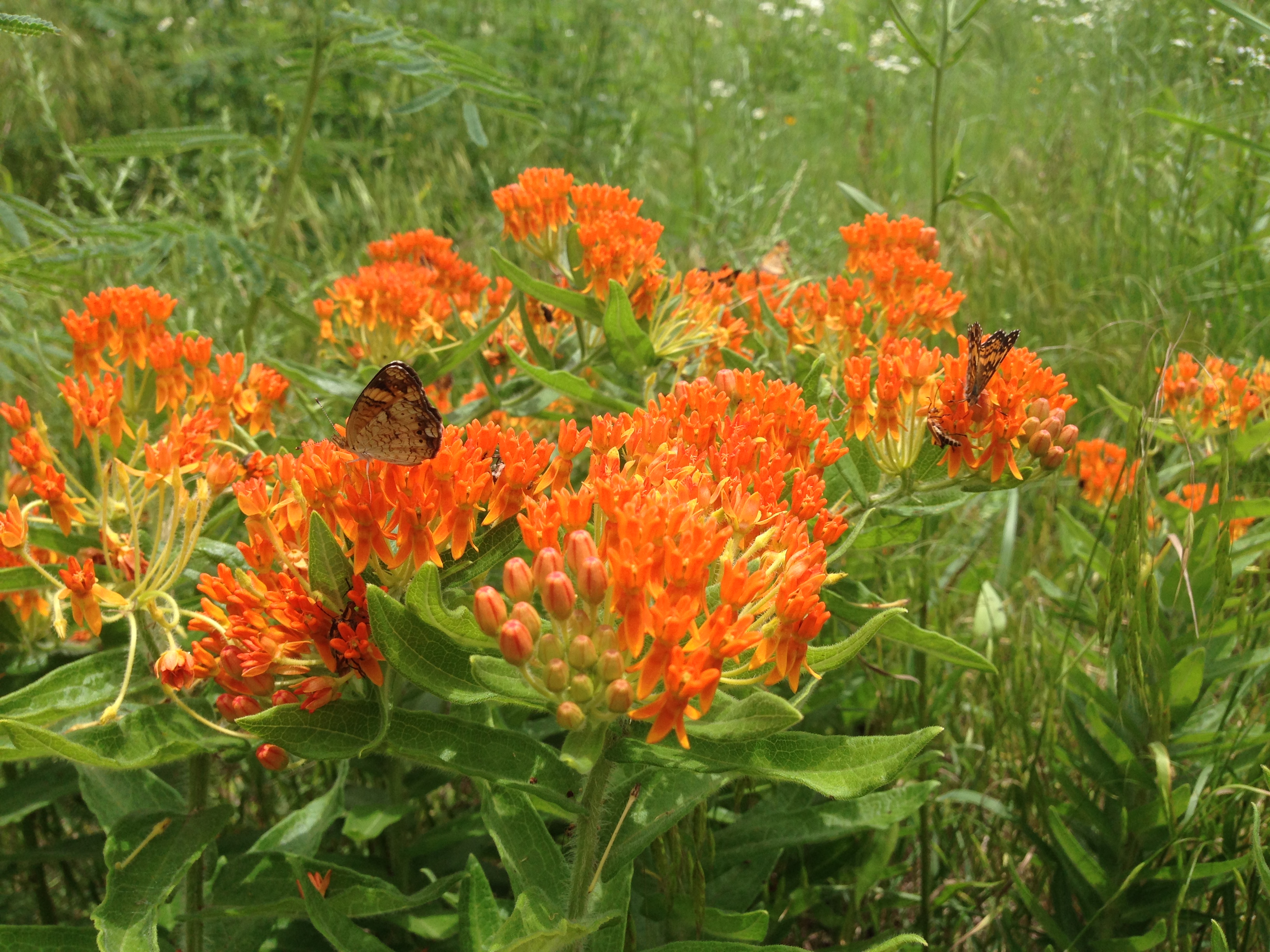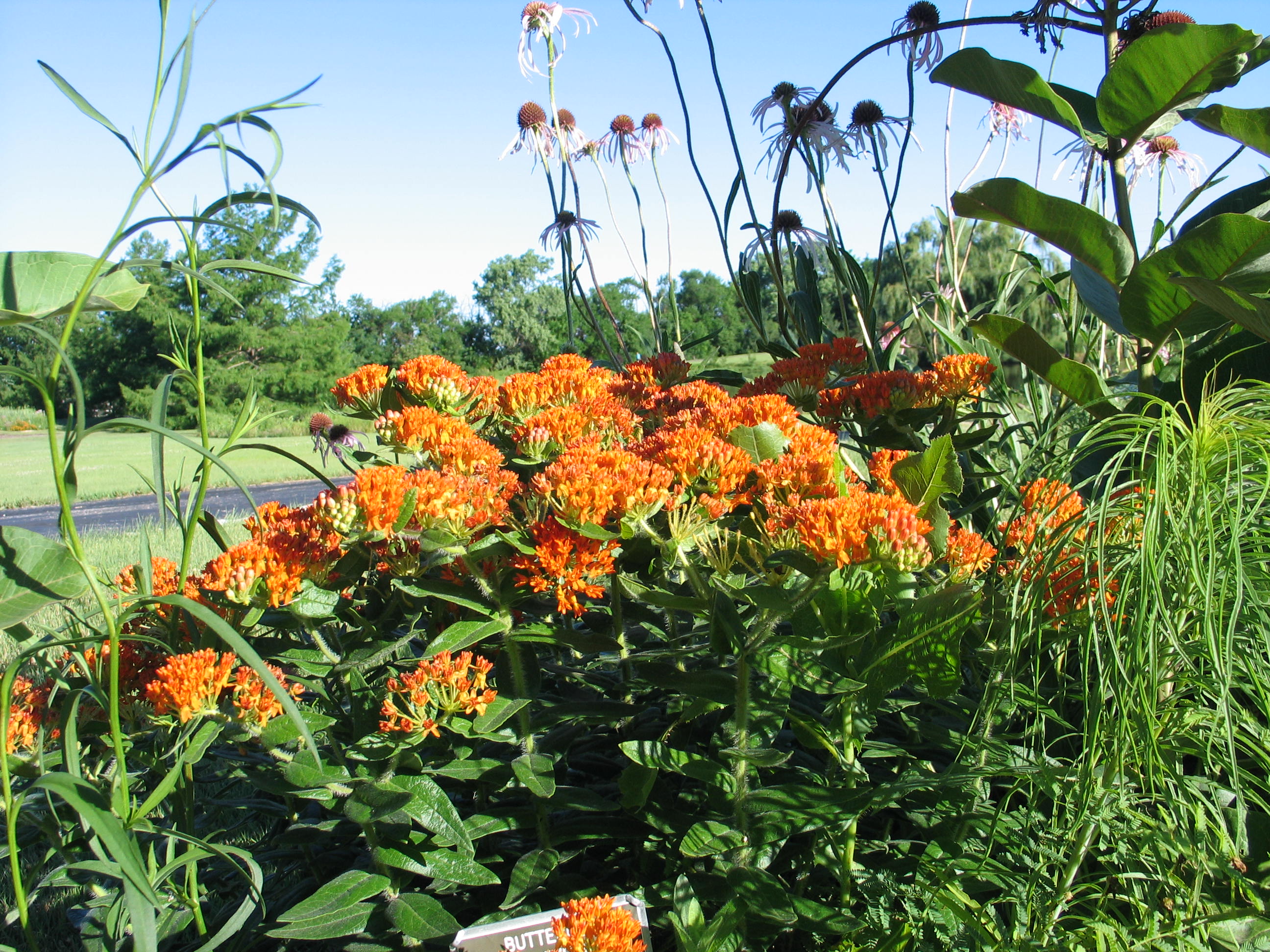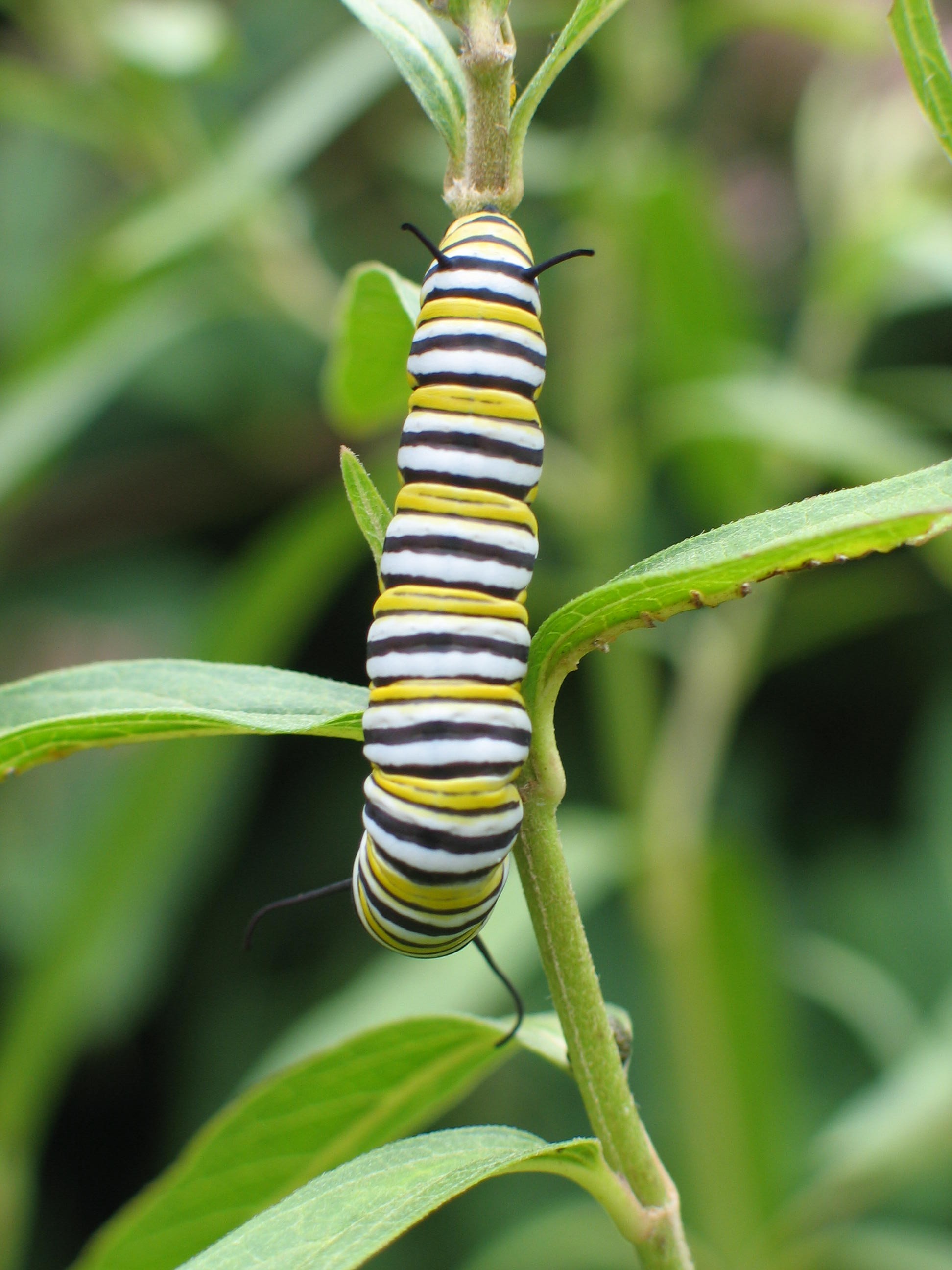It is hard to believe that it’s already 2017. We still have several months of winter to endure, but after the first of the year, my thoughts naturally turn toward spring. I anticipate this barren landscape bursting to life. Wildflowers, grasses, trees and shrubs emerge from their winter slumber to once again beautify the garden. A wonderful wildflower and one of my favorites is butterfly milkweed, Asclepias tuberosa.
2017 Perennial Plant of the Year™
With all the recent buzz about pollinators (pun intended), it seems fitting that butterfly milkweed is the 2017 Perennial Plant of the Year™, according to the Perennial Plant Association. This classic native wildflower is an excellent perennial that is readily recognizable with its bright orange flowers and the host of pollinators that they attract. Found throughout the eastern two-thirds of Kansas, they bloom in late May into August.
Monarchs and milkweeds
Butterfly milkweed, along with other native milkweeds, are vital to the survival of the monarch butterfly. Monarch caterpillars will only eat on milkweeds. No milkweeds, no monarchs! If you plant milkweeds, monarchs will find them in your landscape. It is said that a monarch butterfly can smell a nectar source from up to two miles away.
Recent habitat loss has made it critical that more milkweeds are added to landscapes across the migration path of monarchs. Butterfly milkweed is a stout one to two foot tall perennial with a deep, coarse, fibrous root system. The intricate flowers that reach skyward range from deep orange-red in the eastern part of its range to lighter orange and finally yellow farther west and south in Kansas. Unlike the numerous other milkweeds found in Kansas, butterfly milkweed does not exude a white milky sap when the stem is cut or a leaf is removed.
This sun-loving wildflower grows best in open areas intermingled with native grasses. While it prefers full sun and good drainage, it will tolerate light shade. It is also very drought tolerant once established. Several cultivated varieties of butterfly milkweed have been developed. These include ‘Gay Butterflies’, a mix of red, orange, and yellow flowered plants, and ‘Hello Yellow’, an exclusively yellow flowered selection.
Butterfly milkweed has many outstanding features, but the most important quality is its ability to attract pollinators and other beneficial insects to your garden. If you get some established, it will quickly become a favorite. Its rugged character will make it a focal point in the summer garden for years to come. It is a beautiful wildflower that is at home in the prairie or in your landscape. Can you find a spot for a few in your garden?




